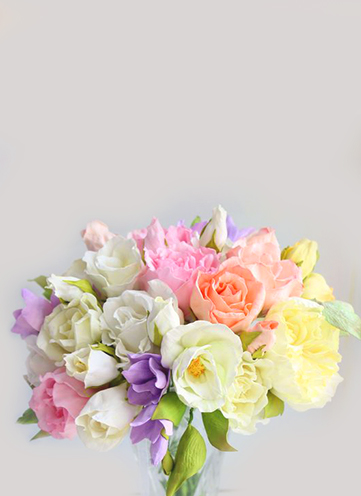Transform Your Hydrangea Care Routine
Posted on 26/06/2025
Transform Your Hydrangea Care Routine: The Ultimate Guide for Enthusiasts
Hydrangeas are among the most beloved garden shrubs, captivating gardeners with their lush foliage and show-stopping blooms. Yet, realizing the full potential of these stunning plants often requires more than just the basics. If you've ever wondered how to transform your hydrangea care routine and breathe new life into your garden, this comprehensive guide is your key to success. Dive in to discover expert insights, actionable tips, and the latest strategies for hydrangea care, so you can nurture strong, resilient, and breathtakingly beautiful blooms year after year.

Why Upgrade Your Hydrangea Care Routine?
Caring for hydrangeas involves more than watering and occasional pruning. Quality care practices can significantly impact your plant's health, color, and longevity. As hydrangea varieties have evolved, so too have the recommendations for their care. By enhancing and updating your hydrangea maintenance strategies, you'll:
- Increase bloom size and vibrancy
- Extend the flowering season
- Maximize resistance to pests and diseases
- Tailor bloom color to your design vision
- Boost overall plant vitality
Let's embark on a journey to revolutionize your hydrangea care approach, giving your garden a true transformation.
1. Choosing the Right Hydrangea Variety
The foundation of successful hydrangea care lies in selecting the ideal species for your site. There are several popular varieties, each with unique attributes and care needs:
Bigleaf Hydrangeas (Hydrangea macrophylla)
- Known for: Large, mophead or lacecap blooms
- Best climate: Zones 6-9
- Special care: Color can change based on soil pH
Panicle Hydrangeas (Hydrangea paniculata)
- Known for: Cone-shaped flowers, cold hardy
- Best climate: Zones 3-8
- Special care: Tolerates more sun and pruning
Oakleaf Hydrangeas (Hydrangea quercifolia)
- Known for: Unique foliage, showy fall colors
- Best climate: Zones 5-9
- Special care: Prefers partial shade and well-drained soil
Choose hydrangeas best suited to your location and garden goals to simplify ongoing care and ensure robust growth.
2. Perfecting Your Planting Process
Planting hydrangeas correctly from the start sets the stage for success. Here's how to ensure your shrubs begin on the right foot:
- Site selection: Choose a location with morning sun and afternoon shade, especially in hotter climates.
- Soil preparation: Hydrangeas thrive in rich, well-drained, slightly acidic to neutral soil.
- Planting depth: Dig holes twice as wide as the root ball and just as deep. The crown should sit level with surrounding soil.
- Spacing: Allow ample space for mature growth. Most types benefit from at least 3-6 feet between plants.
3. Watering Wisdom for Hydrangea Health
Transform your routine with smart watering strategies that encourage deep roots and lush growth:
- Consistent Moisture: Hydrangeas require steady moisture, especially during active growth and bloom.
- Avoid Overwatering: Too much water can lead to root rot and other diseases. Check that the top inch of soil is dry before watering.
- Time it Right: Water early in the day to prevent evaporation and reduce disease risk.
- Mulch Matters: Apply a 2-3 inch layer of organic mulch to retain soil moisture and suppress weeds.
For the most vibrant blooms, never let your hydrangeas wilt from thirst, but also be mindful not to drown their roots.
4. Feeding and Fertilizing for Flawless Flowers
Hydrangeas benefit from a balanced diet tailored to their type and local soil conditions. Transform your hydrangea care with these fertilizing tips:
- Test your soil before purchasing fertilizer. Most hydrangeas thrive with a slow-release, balanced formula (such as 10-10-10) in early spring.
- Bigleaf hydrangeas may require additional phosphorus if blooms are sparse.
- Limit late-season feeding to prevent tender new growth vulnerable to winter cold.
- Organic options like compost or well-rotted manure can boost soil health naturally.
Pro Tip: The color of mophead hydrangea flowers can be shifted by tweaking soil pH--a secret weapon for creative gardeners! Lower pH (add aluminum sulfate) for blue blooms; raise pH (add lime) for vibrant pinks.
5. Pruning for Beauty and Longevity
Regular, correct pruning does more than keep hydrangeas tidy: it also encourages more blooms, larger flower heads, and keeps older plants vibrant. Here's how to transform your hydrangea pruning practices:
- Know your species: Bigleaf and oakleaf hydrangeas bloom on old wood; prune just after flowering, removing up to one-third of older stems.
- Panicle and smooth hydrangeas: These bloom on new wood; prune back in late winter or early spring to encourage vigorous growth and bigger blooms.
- Remove dead or damaged stems year-round - always with sharp, clean shears.
- Shape for airflow: Open up bushy shrubs by thinning interior stems, minimizing fungal risks.
Transform your routine by pruning with confidence and timing for your specific hydrangea type--the results can be genuinely dramatic!
6. Pest, Disease, and Problem Solving
Healthy hydrangea plants are remarkably resilient, but vigilance goes a long way in keeping trouble at bay:
- Aphids and spider mites: Spray with a strong jet of water or use insecticidal soap if infestations persist.
- Powdery mildew and leaf spots: Ensure good airflow via pruning, and avoid overhead watering.
- Root rot: Only plant in locations with excellent drainage; amend heavy soils with compost or perlite.
Ongoing monitoring and swift response to problems guarantee your hydrangeas will thrive and dazzle, season after season.
7. Innovative Hydrangea Care Tips to Transform Your Results
Soil pH Manipulation for Colorful Blooms
- For blue blooms: Lower soil pH with aluminum sulfate or elemental sulfur.
- For pink blooms: Raise soil pH by incorporating garden lime.
- Regular pH checks: Use a test kit every spring to maintain your desired hue.
Seasonal Hydrangea Protection Strategies
- Winter insulation: Pile straw or leaves at the base of bigleaf and oakleaf hydrangeas after frost.
- Spring frost: Protect developing buds with cloth or burlap overnight.
- Summer heat: Use shade cloth for young hydrangeas during heatwaves.
Novelty Hydrangea Care Techniques
- Water from below: Soaker hoses minimize leaf wetness and fungal risks.
- Companion planting: Surround hydrangeas with shallow-rooted flowers to suppress weeds elegantly.
- Deadheading: Remove faded blooms (except on types that form winter interest) to encourage renewed flowering.
8. Sustainable Hydrangea Care Practices
Eco-friendly hydrangea routines benefit your garden and the environment:
- Compost for fertility: Regular mulching and top-dressing with homemade compost boost biological activity and reduce the need for chemicals.
- Water-wise habits: Collect rainwater for irrigation and choose drought-tolerant hydrangea varieties if water is scarce.
- Pest management: Encourage beneficial insects like ladybugs and lacewings to control aphids naturally.
9. Common Hydrangea Care Questions Answered
Why won't my hydrangea bloom?
- Possible reasons: Pruned at the wrong time, inadequate sunlight, or too much nitrogen fertilizer.
Can I grow hydrangeas in containers?
- Yes! Choose dwarf varieties, use large pots with drainage, and fertilize more frequently than in-ground plants.
How often should I feed my hydrangeas?
- Generally, once in early spring and again in early summer is sufficient. Avoid feeding after August.
Can I propagate my hydrangeas?
- Absolutely! Take softwood cuttings in late spring or layering in early summer for new plants.

10. Showcase Your Hydrangeas: Creative Display Ideas
- Mixed borders: Combine hydrangeas with shade-loving perennials for vibrant color and texture.
- Hedges: Use panicle hydrangeas for living privacy screens that burst into bloom midsummer.
- Foundation plantings: Frame entries or terraces for a welcoming, classic look.
- Cut flower arrangements: Harvest hydrangea blooms for dramatic indoor bouquets and dried florals.
Your hard work and refreshing new routine will make hydrangeas the undisputed stars of your outdoor oasis!
Conclusion: Unveil the Magic of Better Hydrangea Care
When you transform your hydrangea care routine, you unlock the true potential of these stunning shrubs. By planting wisely, watering deeply, feeding thoughtfully, pruning expertly, and embracing sustainable solutions, your hydrangeas will reward you with dazzling flowers and robust growth. Whether you're a beginner or a lifelong gardener, applying these tips will elevate your garden style and satisfaction. Start your transformation today--your hydrangeas (and neighbors!) will thank you.
Related keywords: hydrangea maintenance, hydrangea routine, hydrangea care tips, improve hydrangea care, hydrangea gardening, hydrangea health, blooming hydrangea secrets
Latest Posts
Easy-Going Office Plants for a No-Fuss Work Environment
Achieve Vibrant Orchid Blooms with Our Detailed Care Instructions
Effective Habits for Enduring Flower Beauty





